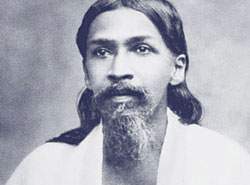The English of Savitri Volume 3

The English of Savitri
volume 3
This is the third volume in the English of Savitri series based on transcripts of classes led by the author at Savitri Bhavan, in this case from July 2014 to July 2015. The transcripts have been carefully revised and edited for conciseness and clarity, while aiming to preserve the informal atmosphere of the course. This volume contains summaries of Books Four, Five, Six and Eight of Sri Aurobindo’s epic Savitri 一 A Legend and a Symbol as well as providing detailed explanations of all the seven cantos of Book Seven, The Book of Yoga, thus covering the whole of Part Two of the poem. Each sentence is examined closely and explanations are given about vocabulary, sentence structure and imagery. The aim is to assist a deeper understanding and appreciation of the poem which the Mother has characterised as ‘the supreme revelation of Sri Aurobindo’s vision’
Author: Shraddhavan
Print Length: 428 pages
Publisher: Savitri Bhavan
Book format: PDF, ePub, Kindle
Language: English
Book Download
Table of Contents
Summaries of Books Four, Five and Six
The Book of Yoga
- Canto One : The Joy of Union; the Ordeal of the Foreknowledge of Death and the Heart’s Grief and Pain
- Canto Two : The Parable of the Search for the Soul
- Canto Three : The Entry into the Inner Countries
- Canto Four : The Triple Soul-Forces
- Canto Five : The Finding of the Soul
- Canto Six : Nirvana and the Discovery of the All-Negating Absolute
- Canto Seven : The Discovery of the Cosmic Spirit and the Cosmic Consciousness
Summary of Book Eight
Book Sample
The English of Savitri
volume 3
Sri Aurobindo divided his epic Savitri into three parts. Part One contains Books One to Three which deal with the yoga of Aswapati, except for the first two cantos of Book One which form an introductory overture to the whole poem. In the English of Savitri series, Book One has been covered in the first volume and Book Three in the second. In this third volume we move on to Part Two of the poem which contains Books Four to Eight and covers the first part of Savitri’s story, from her birth in the first canto of Book Four to the death of Satyavan at the end of Book Eight. We begin with a brief section-wise summary of the nine cantos which make up Books Four, Five and Six of the poem. This is followed by a detailed study of the seven cantos of Book Seven, which forms the main part of this volume. A summary of Book Eight concludes the book.
This third volume of the English of Savitri series continues on from the second one, which concluded with the return to earth of King Aswapati after receiving from the Supreme Divine Mother the promise that an emanation of herself would be born as his daughter with the mission to ‘Change Nature’s doom by the lone spirit’s power’. It covers the whole of Part Two of Sri Aurobindo’s mantric epic Savitri: a legend and a symbol, beginning with brief summaries of Book Four – The Book of Birth and Quest, which tells of Savitri’s birth, childhood and youth and how, when she reaches marriageable age, her father Aswapati instructs her to leave the palace where she has grown up and to travel the lands around in search of the ‘unknown lover’ who is destined to become her ‘second self’ and life-long companion; Book Five – The Book of Love, which tells of the meeting of Savitri and Satyavan; and Book Six – The Book of Fate, in which Narad, ‘the heavenly sage’ reveals that Satyavan is doomed to die in one year’s time. These summaries are followed by detailed sentence-wise explanations of all the seven cantos of Book Seven – The Book of Yoga. A summary of Book Eight – The Book of Death completes this study of Part Two of Savitri.
Book Seven belongs to the later period of Sri Aurobindo’s composition of his epic. There was no Book of Yoga in the original scheme of the poem. Part of an early version called ‘Book III, Death’ was taken up in 1947 and expanded to become Canto One of Book Seven with its long title “The Joy of Union; the Ordeal of the Foreknowledge of Death and the Heart’s Grief and Pain”. The remaining six cantos of this Book are totally new, dictated to Nirodbaran after March 1947. At first this Book had only four cantos, but the second one, “The Parable of the Finding of the Soul”, grew to an inordinate length. When the typescript was revised, it was broken up into Cantos Two to Five, from “The Parable of the Search for the Soul” to “The Finding of the Soul”. While Cantos Two to Seven were composed from scratch, in Canto One passages are found which date back to the earliest stage of the composition of the epic, from 1916 onwards into the 1920s,1 and one single line from the very earliest version, ‘In the sunlight and the moonlight and the dark’, has survived to reappear in the final version near the beginning of Canto Seven.
The Book of Yoga relates the story of Savitri’s inner life from the time when she leaves her father’s palace for the second time, accompanied by a splendid marriage party, to return to the Shalwa forest hermitage where she will live with Satyavan and his parents, until the eve of the day when Satyavan must die. In a way, it parallels the story of King Aswapati’s Yoga which is shown in Cantos Three and Five of Book One, then through the fifteen cantos of Book Two and the four cantos of Book Three. Sri Aurobindo has written that Aswapati’s Yoga falls into three stages:
First, he is achieving his own spiritual self-fulfilment as the individual and this is described as the Yoga of the King. Next, he makes the ascent as a typical representative of the race to win the possibility of discovery and possession of all the planes of consciousness and this is described in the Second Book: but this too is as yet only an individual victory. Finally, he aspires no longer for himself but for all, for a universal realisation and new creation. That is described in the Book of the Divine Mother.2
Savitri’s Yoga similarly goes through three stages: first, the search for her soul, which is shown in Cantos Two, Three and Four of Book Seven and culminates in Canto Five, The Finding of the Soul. Then in Canto Six she is guided to a complete silencing of the mind which leads to the dissolution of ego and the realisation of an all-pervading unknowable Reality, which seems to correspond to Sri Aurobindo’s own first major spiritual experience which he used to refer to as ‘the experience of the silent Brahman’, and sometimes as ‘my Nirvana experience’. It brought him “the realisation of the silent, spaceless and timeless Brahman gained after a complete and abiding stillness of the whole consciousness and attended at first by an overwhelming feeling and perception of the total unreality of the world”.3 For Sri Aurobindo, this was later followed by “the experience of the cosmic consciousness and of the Divine as all beings and all that is”,4 which came to him while he was imprisoned in the Alipore jail and which he has spoken of in his ‘Uttarpara Speech’. This realisation comes to Savitri in the second section of Canto Seven of Book Seven, as the culmination of this stage of her Yoga.
1 Based on Savitri, 1993 edition, ‘Note on the Text’, p. 727
2 CWSA 27:330
3 CWSA 36:94
4 CWSA 36:94





Leave a Reply
Want to join the discussion?Feel free to contribute!